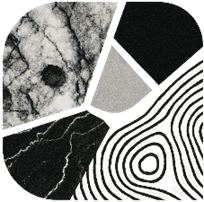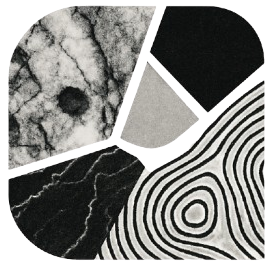How to read the figures
- Compressive strength (MPa) — the vertical load a column or cladding panel can bear.
- Flexural strength (MPa) — critical for thin slabs (15–20 mm) and panels fixed on adhesive or hidden anchors.
- Porosity (%) — the stone’s water uptake; higher values mean a greater risk of staining, efflorescence and frost damage.
- Abrasion loss (mm, EN 14157-A) — the depth worn away by a standard abrasive wheel; the lower the number, the longer a polished floor will keep its gloss.
1.Italy — Bianco Carrara
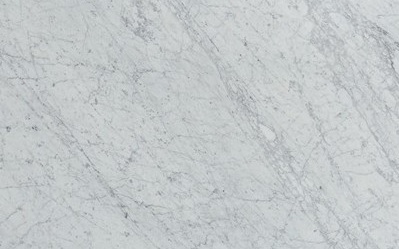
125–127 MPa / 15–22 MPa / 0.30–0.40 % / 19–26 mm
Carrara is the undisputed heavyweight for strength: up to 127 MPa in compression lets engineers build stone staircases without hidden steel ribs, while 22 MPa in flexure permits calibrating slabs to 12 mm. Its drawback is porosity—up to 0.40 %. Bathrooms and spas therefore need at least two coats of sealer, renewed regularly, or the cool-grey surface darkens under oils and pigments. Estremoz Branco is a little softer (77–97 MPa) yet its porosity is just 0.20 %—a practical advantage where floors meet water or wine. Abrasion is nearly the same (17–22 mm vs 19–26 mm), and Estremoz’s warmer tone helps designers soften glass-and-concrete interiors where Carrara can feel clinical. One Carrara edge: extra-large blocks (> 3.20 m) are easier to source.
Carrara is the undisputed heavyweight for strength: up to 127 MPa in compression lets engineers build stone staircases without hidden steel ribs, while 22 MPa in flexure permits calibrating slabs to 12 mm. Its drawback is porosity—up to 0.40 %. Bathrooms and spas therefore need at least two coats of sealer, renewed regularly, or the cool-grey surface darkens under oils and pigments. Estremoz Branco is a little softer (77–97 MPa) yet its porosity is just 0.20 %—a practical advantage where floors meet water or wine. Abrasion is nearly the same (17–22 mm vs 19–26 mm), and Estremoz’s warmer tone helps designers soften glass-and-concrete interiors where Carrara can feel clinical. One Carrara edge: extra-large blocks (> 3.20 m) are easier to source.
2.Spain — Crema Marfil
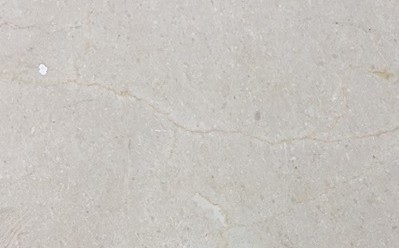
≈ 123 MPa / 11–12 MPa / 0.90 % / ≈ 19.5 mm
Compression rivals Carrara, but the flexural limit (11–12 MPa) forces column cladding up to 30 mm—and off-cut losses rise when cutting big portals. A record-high porosity of almost 1 % means hotel lobbies see Crema floors darken along suitcase routes within a year or two unless heavily sealed. Estremoz absorbs five times less water and wears at a similar rate, so its calm cream-white surface can go ten years or more before re-polishing.
Compression rivals Carrara, but the flexural limit (11–12 MPa) forces column cladding up to 30 mm—and off-cut losses rise when cutting big portals. A record-high porosity of almost 1 % means hotel lobbies see Crema floors darken along suitcase routes within a year or two unless heavily sealed. Estremoz absorbs five times less water and wears at a similar rate, so its calm cream-white surface can go ten years or more before re-polishing.
3.Turkey — Mugla White
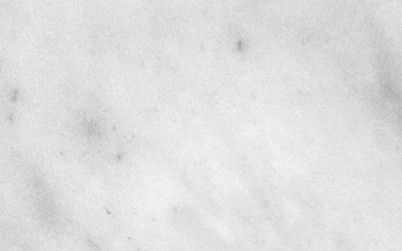
58–60 MPa / 7–9 MPa / 0.50 % / 20–24 mm
Mugla is the budget classic, clearly weaker: 60 MPa is the upper limit, and 7–9 MPa in flexure makes 20 mm façade slabs risky without mesh, as wind-induced vibration may cause micro-cracks. Porosity at 0.50 % and abrasion to 24 mm dull a polished surface quickly in traffic zones. Estremoz Branco is two to three times stronger and holds its polish far longer, while its price sits between Mugla and Carrara. What Mugla alone offers is an almost “northern” pure white; Estremoz is always slightly warm.
Mugla is the budget classic, clearly weaker: 60 MPa is the upper limit, and 7–9 MPa in flexure makes 20 mm façade slabs risky without mesh, as wind-induced vibration may cause micro-cracks. Porosity at 0.50 % and abrasion to 24 mm dull a polished surface quickly in traffic zones. Estremoz Branco is two to three times stronger and holds its polish far longer, while its price sits between Mugla and Carrara. What Mugla alone offers is an almost “northern” pure white; Estremoz is always slightly warm.
4.Greece — Thassos White

≈ 100 MPa / 15–16 MPa / 0.14 % / ≈ 21–22 mm
Thassos sets the benchmark for snowy whiteness and ultra-low porosity (0.14 %), ideal for crystal-white boutique bathrooms. Mechanical values match the top end of Estremoz, but island quarries are small and blocks rarely exceed 260 × 140 cm. When a seamless 300 × 150 cm panel is required, Portuguese stone gives the specifier a better chance. Thassos costs 25–40 % more, while Estremoz’s fine “sugary” texture throws softer highlights under raking light and sits happily against pine or oak.
Thassos sets the benchmark for snowy whiteness and ultra-low porosity (0.14 %), ideal for crystal-white boutique bathrooms. Mechanical values match the top end of Estremoz, but island quarries are small and blocks rarely exceed 260 × 140 cm. When a seamless 300 × 150 cm panel is required, Portuguese stone gives the specifier a better chance. Thassos costs 25–40 % more, while Estremoz’s fine “sugary” texture throws softer highlights under raking light and sits happily against pine or oak.
5.China — Guangxi White
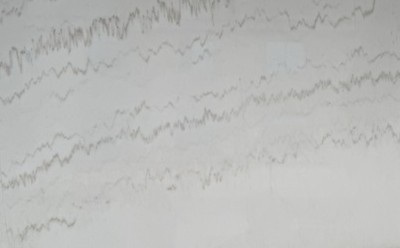
≈ 90 MPa / 12–14 MPa / 0.10–0.20 % / 20–23 mm
Guangxi wins on availability: volumes are vast and standard 30 × 60 cm tiles are always in stock. Mechanics are sound, but porosity ranges widely—0.10 % only in premium select, commercial batches closer to 0.20 %. Designers’ chief complaint is tonal spread from milky white to greyish; for a seamless mall floor one must cherry-pick crates. Estremoz Branco leaves the quarry more consistent: its warm cream hint runs block after block, saving time on site inspections.
Guangxi wins on availability: volumes are vast and standard 30 × 60 cm tiles are always in stock. Mechanics are sound, but porosity ranges widely—0.10 % only in premium select, commercial batches closer to 0.20 %. Designers’ chief complaint is tonal spread from milky white to greyish; for a seamless mall floor one must cherry-pick crates. Estremoz Branco leaves the quarry more consistent: its warm cream hint runs block after block, saving time on site inspections.
6.India — Makrana White
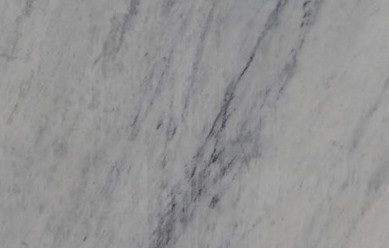
88–157 MPa / 15–18 MPa / ≤ 0.60 % / 18–22 mm
The legendary marble of the Taj Mahal offers potentially very high strength (some beds reach 150 MPa), but the spread is huge—adjacent blocks can test at 90 MPa, complicating façade engineering. Porosity varies up to 0.60 %, so public washrooms usually plan on re-polishing every 3-4 years. Estremoz delivers far more predictable numbers—77–97 MPa throughout the anticline and reliably low porosity. Wear is similar (18–22 mm). Makrana’s slight cream-yellow overtone does not suit every cool palette, whereas Portuguese stone keeps a neutral warm balance.
The legendary marble of the Taj Mahal offers potentially very high strength (some beds reach 150 MPa), but the spread is huge—adjacent blocks can test at 90 MPa, complicating façade engineering. Porosity varies up to 0.60 %, so public washrooms usually plan on re-polishing every 3-4 years. Estremoz delivers far more predictable numbers—77–97 MPa throughout the anticline and reliably low porosity. Wear is similar (18–22 mm). Makrana’s slight cream-yellow overtone does not suit every cool palette, whereas Portuguese stone keeps a neutral warm balance.
In practice
Estremoz Branco may not top every single chart, yet its balanced trio of qualities—strength sufficient for most structural and curtain-wall uses, low porosity demanding minimal maintenance in wet zones, and moderate abrasion so floors keep their gloss for 8–12 years—makes it a true all-rounder for the architect. Add to that large block sizes, a gentle creamy undertone, deep heritage and full European certification, and it becomes clear why this Portuguese marble so often edges out louder Italian or Greek names, especially on projects where uniform colour, controllable budget and long life without complex upkeep are the priorities.
Estremoz Branco may not top every single chart, yet its balanced trio of qualities—strength sufficient for most structural and curtain-wall uses, low porosity demanding minimal maintenance in wet zones, and moderate abrasion so floors keep their gloss for 8–12 years—makes it a true all-rounder for the architect. Add to that large block sizes, a gentle creamy undertone, deep heritage and full European certification, and it becomes clear why this Portuguese marble so often edges out louder Italian or Greek names, especially on projects where uniform colour, controllable budget and long life without complex upkeep are the priorities.
